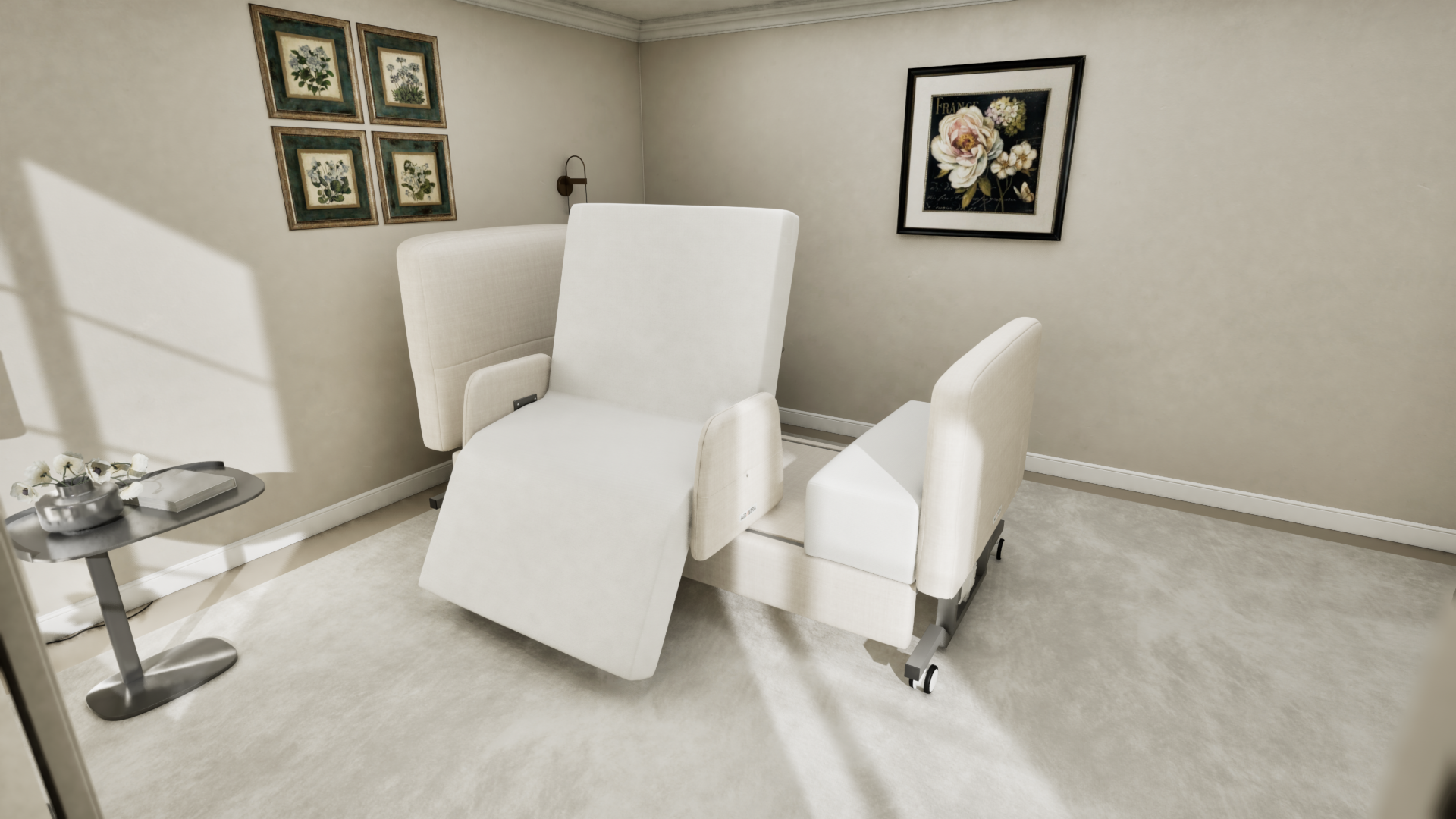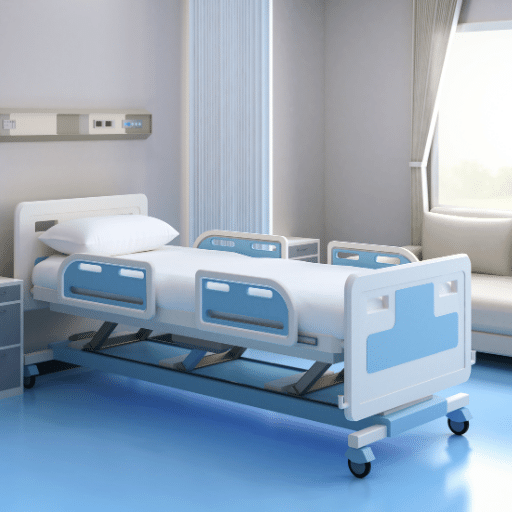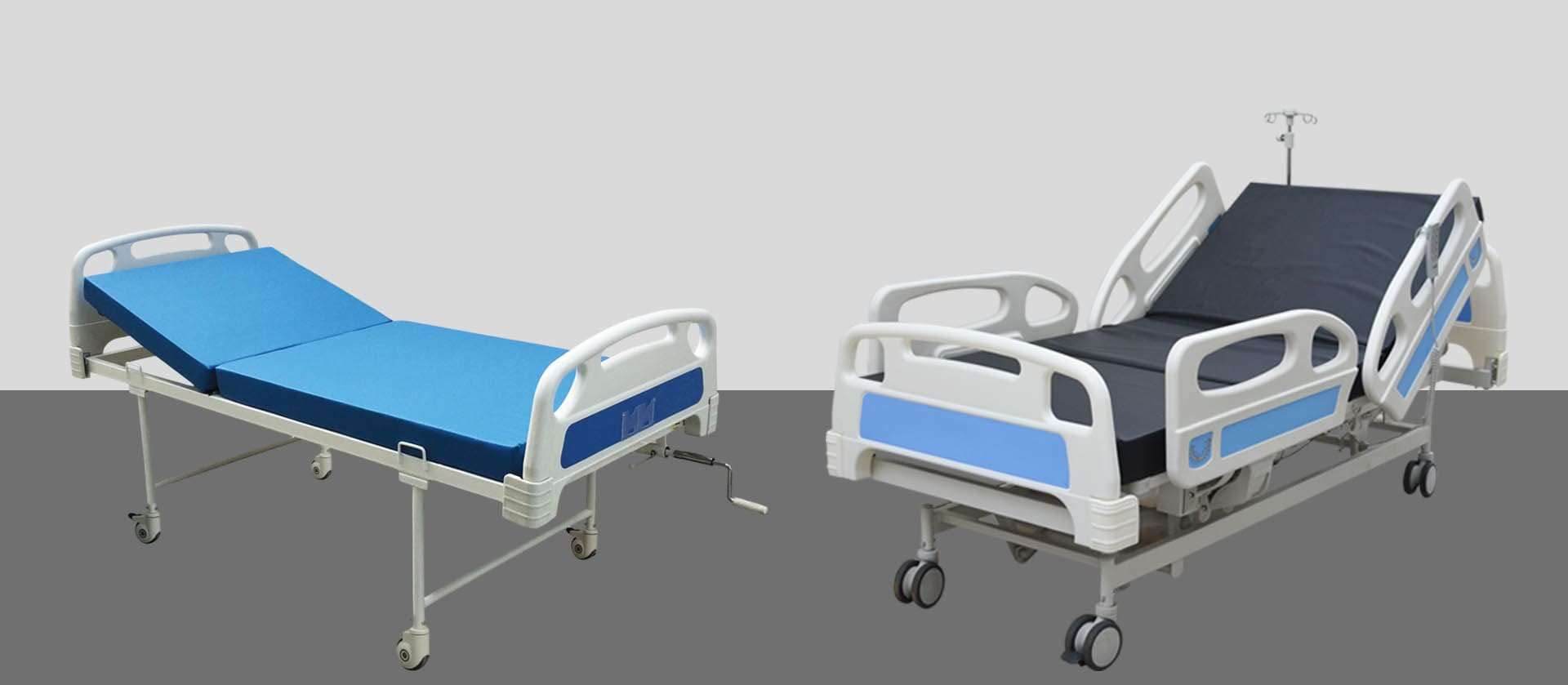The Buzz on Hospital Beds For Home Use
Table of ContentsGet This Report on Hospital Beds For Home UseThe Main Principles Of Hospital Beds For Home Use About Hospital Beds For Home UseIndicators on Hospital Beds For Home Use You Should KnowThe smart Trick of Hospital Beds For Home Use That Nobody is Talking AboutThe Ultimate Guide To Hospital Beds For Home UseHospital Beds For Home Use - An Overview
There are three main types of health center beds: guidebook, semi-electric, and fully-electric. These beds make use of hand cranks to change the bed's elevation and raise and lower the head and the foot.
Semi-electric beds have an electric motor to raise and decrease the head and foot sections of the bed (hospital beds for home use). Full-electric beds have an electrical motor that can elevate the head and foot areas of the bed as well as the entire height and positioning of the bed.
Hospital Beds For Home Use for Beginners
Some models can additionally move into even more settings, such as the Trendelenburg (tilt) position. There are several kinds of health center beds, each created to satisfy specific person requirements. Here are some usual types: This is one of the most typical kind of healthcare facility bed, developed for general medical usage. It has a manual or electrically flexible headrest, footrest, and elevation.
Reduced to the ground than a typical bed. This type of bed is designed for larger people, with a larger framework and greater weight capacity than a standard bed. This kind of bed is made particularly for kids, with smaller dimensions than a conventional bed. Special features such as complete size side rails and cartoon style.
This kind of bed is made for critically ill patients who need open surveillance and specialized clinical equipment such as ventilators and infusion pumps. This kind of bed is developed for use throughout labor and distribution, with flexible placements and attributes to support the mother and baby during the birth process.
Little Known Facts About Hospital Beds For Home Use.
Several function and the accessories execute increasing grip to various parts of the vertebra and the extremities without moving the body. These are just a couple of instances of the kinds of health center beds readily available. The certain type of bed used will certainly rely on the individual's condition, clinical requirements, and other factors.
Below is things you need to recognize. A one-function health center bed is a clinical bed that allows a person to relocate only the head or foot area up or down. A 2 function health center bed commonly refers to a sort of clinical bed that has two flexible functions to aid individuals in healthcare facilities or treatment facilities.

The Best Guide To Hospital Beds For Home Use
A 7-function ICU bed is a sort of medical bed that offers several flexible features to sustain seriously sick patients in an intensive treatment device (ICU) (hospital beds for home use). The 7 features usually include: Backrest change: The back-rest can be readjusted to different angles to aid the individual sit up or rest comfortably
Elevation adjustment: The bed can be increased or lowered to make it easier for individuals to obtain in and out of bed, and for caregivers to supply treatment. Trendelenburg placement: The whole bed can be tilted to advertise blood circulation and blood circulation in the body. Reverse Trendelenburg placement: The bed can additionally be tilted in the contrary instructions to advertise blood circulation and circulation in the top body.
While even more budget friendly than electric models, these beds need exertion for adjustments. The main advantages of hands-on beds are their cost and reliability, as they do not count on power. Nevertheless, the need for hand-operated initiative can be a limitation in situations where quick changes are essential or where caregivers encounter physical obstacles.
Some Known Details About Hospital Beds For Home Use
Semi-electric health center beds supply a balance of guidebook and electric controls. These beds provide an optimal middle ground in between handbook and completely electric alternatives, using simplicity of usage without the complete cost of electric models.
Semi-electric beds are fit for individuals who need modest modifications to the head and foot sections however can handle without regular elevation modifications. This makes them an affordable solution for those seeking convenience and ease without the demand for continuous repositioning. Completely electric healthcare facility beds include electrical controls for smooth modifications to the elevation, head, and foot sections.
Specialty medical facility beds, such as ICU beds, lasting visit their website treatment beds, and bariatric beds, are very carefully made to address certain clinical demands. These beds supply tailored look after varied patient groups, enhancing both end results and convenience. In the adhering to sections, we will certainly discover the main kinds of specialized hospital beds, describing their certain benefits and applications.
With years of experience in producing electric straight actuators - hospital beds for home use and close cooperation with the healthcare industry, TiMOTION is well-positioned to provide trustworthy medical care options. Our up and down incorporated company manages every action of the manufacturing procedure, from layout their website to actuator setting up, guaranteeing we deliver phenomenal worth and customized options customized to your details requirements
Some Ideas on Hospital Beds For Home Use You Should Know

For more information concerning integrating these technologies right into your items, call us today. Further reading:.
Information is sourced from the Medicare Price Record.

Rumored Buzz on Hospital Beds For Home Use
A health center bed is a look at here now bed developed specifically for medical purposes. It is not just a place for individuals to rest, yet likewise a system for clinical procedures. Unlike common home beds, healthcare facility beds typically have flexible features, which can promote medical team to make numerous adjustments according to the demands of people, such as transforming the height, disposition, and support angle of the back and legs of the bed.